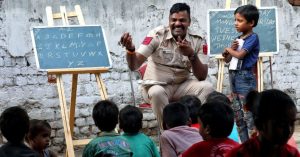Why A 72-YO Is Teaching Educators How to Use Puppets for Storytelling
Teacher Lata Satagopan has been using puppetry for decades to teach children across India. She explains why she got into this field, and how it has helped her explore new ways of teaching.
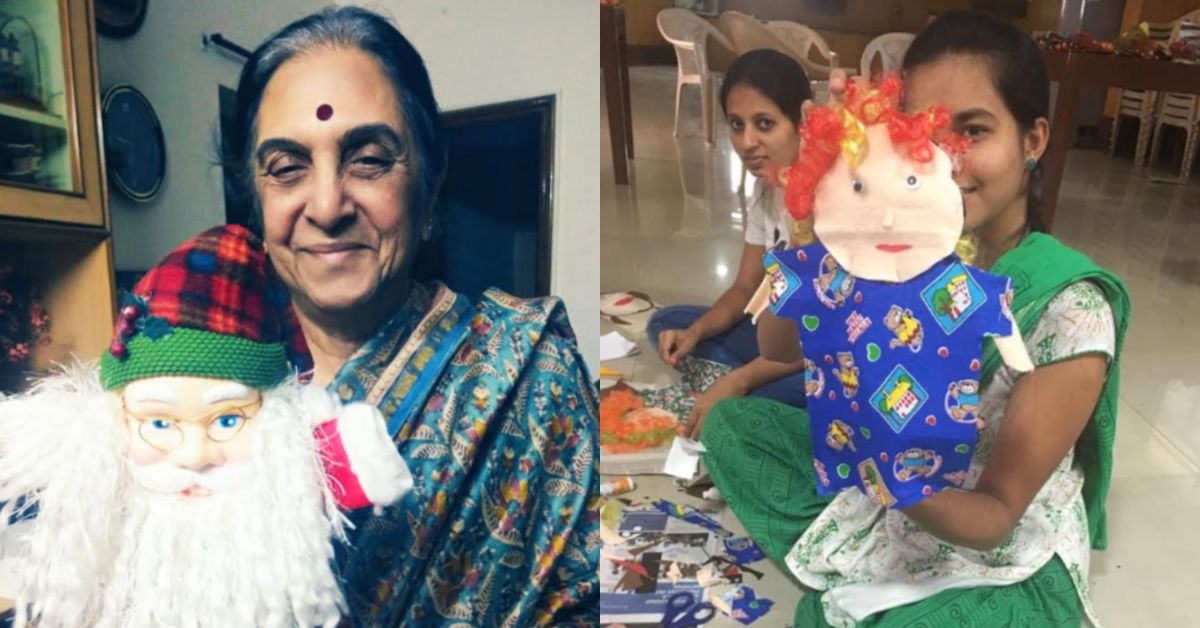
What makes 72-year-old Lata Satagopan so passionate about using puppetry in education? Her strong belief that it is a technique well suited to storytelling. And storytelling, in turn, is an effective tool of communication. “Puppetry is an ideal educational tool for the 9-14-year age group. A puppet is not just a doll or a toy. It has life and can replace a human,” she explains.
“A storyteller has the option of using plain narrative or combining it with a visual medium like drama or puppetry. In a plain narrative, the narrator has to be very expressive with words and the children have to understand exactly what is being said. This understanding is made easier by using puppets. In fact, I use speaking puppets minimally. The message should come through puppet play, the action,” she explains.
Lata has been committed to innovative and socially relevant puppet-making for the past 37 years, and has earned repute in India and abroad. She trains teachers in puppetry in training colleges as well as institutions like Mt Carmel’s and Christ University in Bengaluru. Alongside, she conducts workshops for children and adults alike to share her passion for puppetry.
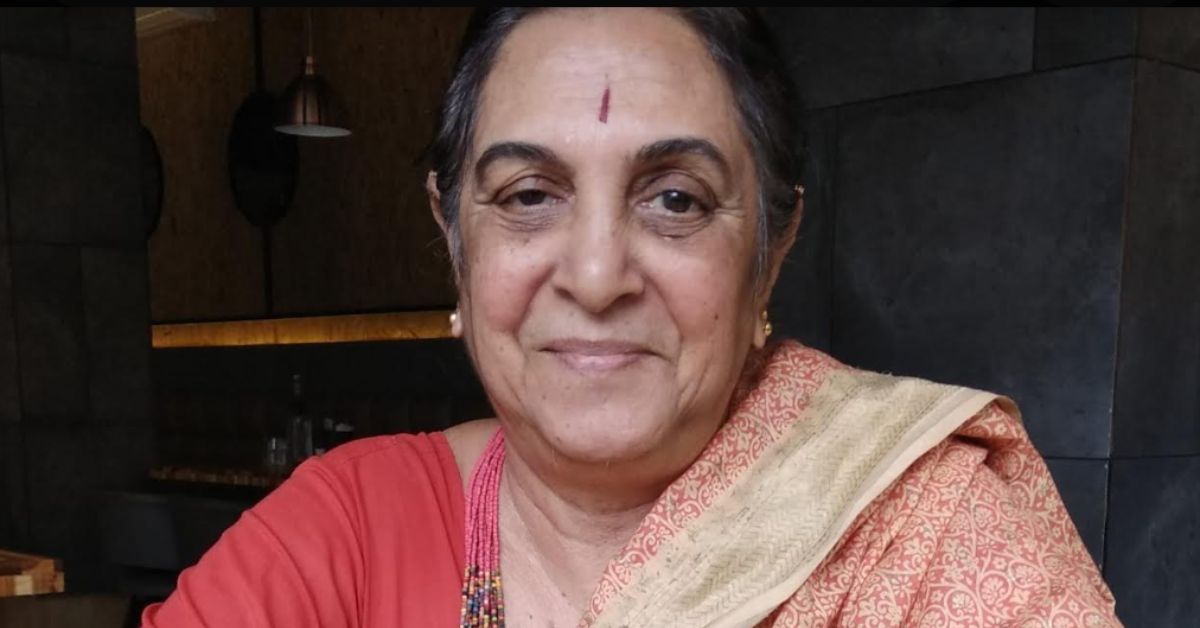
Lata’s thematic puppet performances, conducted both online and offline, imbibe the principles of ‘theatre in education’ combined with her practice of storytelling and scriptwriting. She uses these to fuel her passion for reviving the art of storytelling through puppetry, and has received a state award as an innovative puppetry teacher.
Behind the screen
Lata recalls that her passion for drama and literature developed during her school days in Bengaluru. With the support of her teachers, she would set up plays on topics like world culture, mime entire poems, and explore her school’s puppet theatre. As an introverted child, she notes, she found it enjoyable to be able to speak from behind the screen.
“An exciting period in school life was when [English actor] Jennifer Kendal and her family came to our school to conduct workshops. We were exposed to Shakespearean theatre for three years. Since we were a small group, we got the best of the interpersonal interaction,” relates Lata.
After completing her BEd and MA in English, Lata became an English language teacher in Women’s Peace League school, where she taught for 12 years. She would get actively involved in staging plays at the school, which she enjoyed. Exposure to drama early in life had changed her thought process. As a teacher, it made her want to try out new things.
‘How I became a puppeteer’
The turning point in her life and career came when she was asked to represent her school and the state of Karnataka at a 45-day puppetry training programme held in Shillong in 1986. The programme was organised by NCERT (National Council of Educational Research and Training), New Delhi.

This was her first exposure to the outside world. There were around 100 teachers from all parts of the country, and the theme was national integration, wherein participants learnt patriotic songs.
“It was an enjoyable experience. I was exposed to puppeteers from different regions and we would exchange our skills and experiences of training. Famous puppeteers were our mentors.”
“After the programme, I received a certificate that stated that I had been trained in the ‘educational use of puppetry’. Participants had to come back and spread the message of integration in their states. Without knowing it, I had been chosen as a resource person in puppetry for the department of education,” says Lata. Subsequently, she has attended conferences and presented papers for NCERT.
Tapping into your ‘inner child’
According to Lata, making puppets and participating in puppetry shows improves communication, interpersonal, literacy and motor skills of children. It is also therapeutic as it taps into the ‘inner child’, and hones both creative and critical thinking skills.
“Getting involved in puppetry brings about positive behavioural changes and improves socialisation as well,” asserts Lata.
As an educational tool, puppetry also makes learning more interesting for children, and develops observation skills in children. “This media is powerful because of the visualisation involved, the movement or action, and because it facilitates language development,” she explains.
Two developments have given a boost to puppetry in India. In accordance with the National Education Policy 2020, which suggests experiential learning (learning by doing an activity) for all age groups, the Central Government has developed a toy-based pedagogy to help school children in the age group of 3 to 18 years understand basic concepts of science and mathematics, as well as develop sensory and motor skills. Alongside blocks, puzzles, masks and sand art, puppets are to be used as tools by schools to teach children.
Another development that Lata opines augurs well for the future of puppetry in India is that the art has been included in the BEd curriculum for the past few years. “I was asked to address 100 students who had enrolled for the BEd course on the subject of puppetry. We made puppets out of newspaper. Puppetry can be used to teach English, mathematics, science and social studies,” she says.
Twist endings, creativity unleashed
The topics of the puppetry shows are usually socially relevant such as personal hygiene, Swachch Bharat, health issues, community living, national integration, behaviour of children during COVID, career counselling and guidance, and messages to protect the environment.
For writing scripts around these, Lata also involves the children. She has prepared subject kits with puppets for topics like shapes, rainbow colours, food chain, Swachch Bharat, and national integration.
At times, Lata performs shows based on books. She has created puppet performances based on the ‘The Little Red Hen’, ‘Three Little Pigs’, ‘Birbal’s Khichdi’ and on the story of Christmas, to name a few.
She narrates an interesting incident. “We were staging the story of the lion and the rabbit and how the rabbit escapes by outwitting the lion. In the traditional story the lion falls into the well and dies. But, in a twist in the tale, the children decided that they wanted to teach the lion a lesson but did not want him to die. So, in their ending, the lion emerged from the well feeling repentant.” Even Lata did not know of this change!
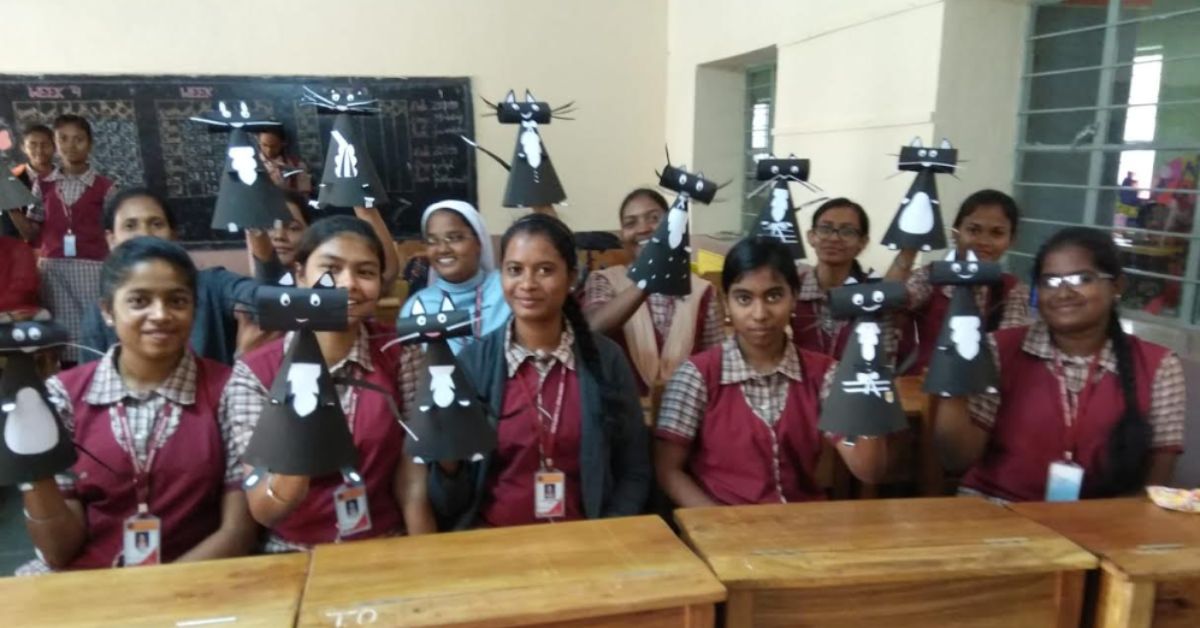
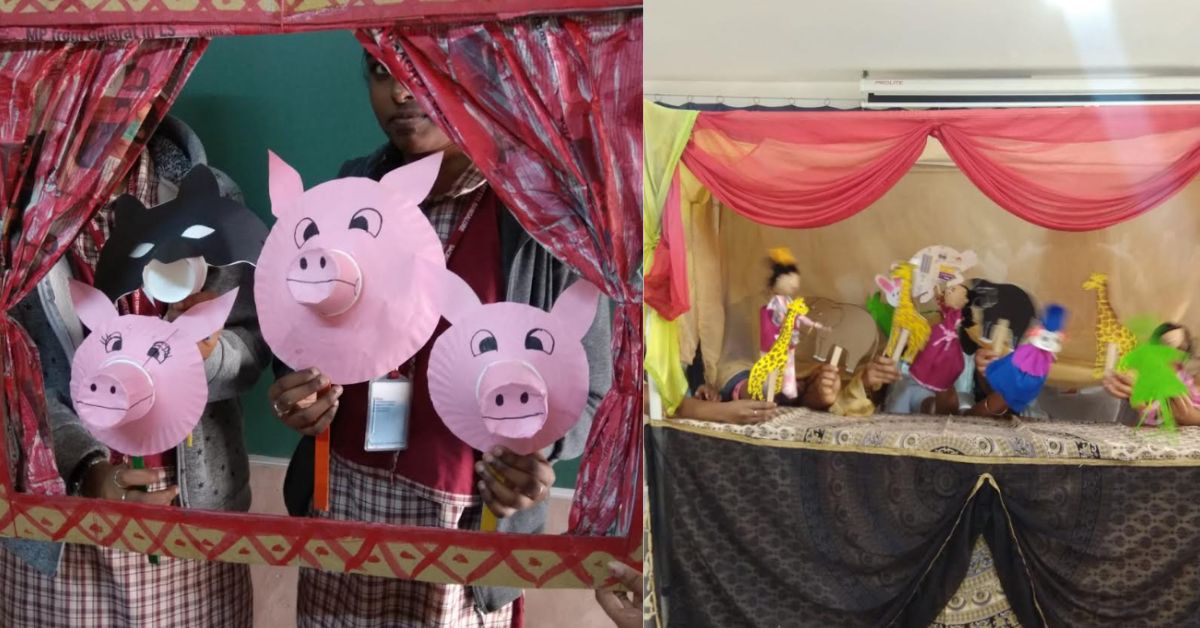
‘Joy and meaning’
While there are many styles of puppetry, Lata specialises in ‘glove puppets’, where the connection between the puppeteer and the puppets is closer. When she is giving a demonstration on puppetry, she also shows how string, spoon and leather puppets are used. Different energy levels are needed depending on the style of puppetry, she says.
“Puppets are commonly made of paper, thermocol and cloth. I use handmade paper and, as a result, the puppets have lasted over the years in spite of wear and tear due to usage by children,” says Lata.
She also likes combining songs with storytelling, which makes her shows more interactive, as the audience can sing along. Each performance requires a rehearsal of a maximum of three days. At times, she carries a makeshift screen with her. At others, she improvises on the set with tables and sheets. She has to select the right indoor place as voices won’t carry in the open.

“In 1992, we had to perform at the Visvesvaraya museum on the topic of space. I was wondering how to show stars or a rocket fly. We were helped by the museum team to prepare a slide show that ran in parallel with the puppet show. This was an innovation that has helped me on numerous occasions. I used it when I helped a group of children put up a puppetry show at a community programme on infectious diseases at St John’s Medical College,” narrates Lata.
Recorded voices are not used in puppetry, as live voices make the performance more engaging. But Lata has introduced recorded music in some performances instead of live orchestra. If you found our stories insightful, informative, or even just enjoyable, we invite you to consider making a voluntary payment to support the work we do at The Better India. Your contribution helps us continue producing quality content that educates, inspires, and drives positive change. Choose one of the payment options below for your contribution- By paying for the stories you value, you directly contribute to sustaining our efforts focused on making a difference in the world. Together, let’s ensure that impactful stories continue to be told and shared, enriching lives and communities alike. Thank you for your support. Here are some frequently asked questions you might find helpful to know why you are contributing?

“Puppetry brings joy and meaning to my life in several ways. I am sharing my own passion with others. I am constantly innovating and being more creative. For instance, I am now involved in using puppetry to introduce different kinds of masks in India. My work involves a lot of research, which I love doing. I also feel I am contributing to popularising the skill of puppetry. Karnataka is famous for puppetry, but has not received sufficient recognition. Along the way, I am encouraging new puppetry artists,” she says.
Edited by Divya Sethu; Photo credits: Lata Satagopan
This story made me
-
97
-
121
-
89
-
167




